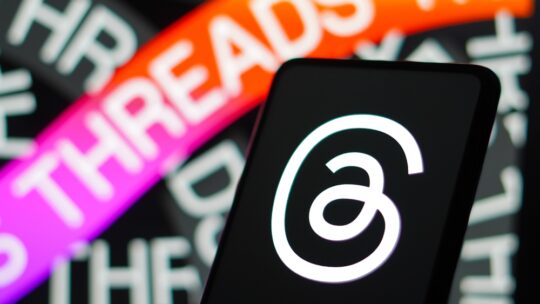
While Twitter may be decelerating as the top conversation-based social media app, numerous replacements seem to be popping up to take its place.
Platforms such as Mastodon, Post, Spill, Bluesky and now Threads emerge almost weekly to varied fanfare.
Threads launched the current greatest threat to Twitter, amassing over 100 million users in less than a week (thanks to a nice built-in convertible user experience from Instagram). While traffic has slowed a bit since launch, it’s remaining one of the most talked about and utilized platforms in the social media sphere.
However, new social media platforms are not without their share of problems. One of the biggest issues with the Threads platform is its failure to prioritize accessibility and provide all users with a seamless experience.
According to Mashable, Threads “doesn't seem to accommodate those with disabilities well, offering few accessibility tools, customization options, or site policies on its accessibility features at large.”
Users with disabilities have complained that Threads lacks these main accessibility features:
- user-generated alt text for images, which allows blind and low-vision users accessibility for visual content
- no option for custom captioning for videos (auto-captioning is an option).
AbilityNet, a charity in the United Kingdom that helps organizations to build accessible digital products and services, failed Threads in a recent accessibility test, finding even more issues for user experience including color and button orientation, text and navigation problems.
Communicators and PR professionals cannot do much to fix the issues of a platform for an international company. However, they can learn about these platforms and provide the best user experience possible for their audiences.
For this edition of Top Tips, we asked communicators how to evaluate new platforms for accessibility, and how they prioritize that feature in their overall social media strategy.
Tip #1: Diversify your team
Dr. Raja Kushalnagar is a professor and director of the Information Technology Program at Gallaudet University, which has been the educational, political, social, and economic engine of the deaf and signing community on a national and global scale for more than 150 years.
“Without the life experiences to make unexpected connections between things we already know, we may not find the best accessibility solution, and we pay an opportunity cost, a cost in designs not thought of, in solutions not produced. Bringing together teams with diverse hearing abilities greatly expands the range of possible solutions for aural access, and hence, the likelihood of an elegant solution.
When companies create new platforms that do not include team members with diverse abilities, such as Meta's Thread, these platforms are unlikely to have accessible features.”
Tip #2: Evaluate built-in accessibility settings
Current Global provides Accessible by Design (ABD) training, designed to teach communications professionals how to make their work accessible to all, especially people with disabilities.
Ishaan Rastogi, junior associate, Current Global:
(Disclaimer: I can only speak from an Android user point of view.)
“It would be great to have native built-in accessibility settings, such as enlarged text. I did not come across any accessibility settings within the app. Threads ties in directly with IG (which currently has two accessibility settings, Captions and Dark mode). I can’t play around with the font-size or manipulate text in any way, which is what I would say is my personal and largest barrier. I have to leave the native app and manually go into accessibility in my phone settings and force zoom-in features or text contrast/enlargement.
I haven’t been utilizing Threads all that much partly because the text is so small and having to zoom into everything on a tiny phone screen makes the overall user experience clunky and slow to work with.”
Tip #3: Pre-plan for posting difficulties
Matisse Hamel-Nelis, ADS, CPACC, vice president communications Abledocs, vice president inclusivity, diversity, equity and accessibility (IDEA), IABC :
“When a new social media platform launches without accessibility features, it's our job to make up the difference to ensure content is accessible to everyone.
For example, if you know you will share an image, you need to add the image description within your 500-character post limit. Another quick win is if you're uploading a video, add open captions so people who are d/Deaf or hard of hearing can still access the content.
With a platform that gained over 100 million users, Threads is a platform that has staying power. However, to engage with everyone on the platform, you must make your content as accessible as possible, even if the platform itself doesn't make it easy.”
Tip #4: Work closely with design teams
Jennifer Ringler, MS, founder and CEO, ReadHealthy Communications:
“Creative and design teams: please stop insisting that a super-tiny font makes you…look more “professional” and “sophisticated.” Stop putting copy over hero and banner images on websites. And stop using overlay text on graphics on social media; the text-to-voice software that some visually impaired people use cannot read text embedded in an image. If your content is good, following ADA accessibility standards won’t “get in the way” of your PR firm’s success.
Tip #5: Wait and see
Sheridan Powell, communications specialist, Visit Colorado Springs:
“In regards to Threads, we have not created an account quite yet. In general, we try to wait a bit and see how things play out / if they’re sustainable / if there’s a place for us on a platform before jumping right in. I had not heard that Threads lacked accessibility features, but that is something we try to put at the forefront of our strategies on social media."
Nicole Schuman is senior editor for PRNEWS. Follow her @buffalogal
